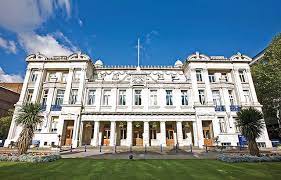Queen Mary University of London: Levelling up agenda risks levelling down London, warns new research
A new report explores how East and South-East London neighbourhoods have changed since the millennium, and how these parts of the capital may look by 2040. Queen Mary and Centre for London conducted stakeholder interviews and local data analysis in three distinct areas – Stratford, Poplar and Thamesmead – to understand how people’s lives have changed since 2000 and what they hope to see in the coming decades.
Researchers found that, despite being close geographically, these areas vary enormously in their social characteristics and recent economic histories; Stratford has changed significantly since hosting the 2012 Olympics, with 30 years of infrastructure developed in seven years, while Poplar has seen slower progress over decades in the Docklands and transformation in Thamesmead is largely still to come.
The research shows positive changes across East and South-East London in recent decades: new housing developments, less deprivation (per IMD scores) and better educational outcomes, with household income having less impact on school attainment now than it used to. However, researchers point out that success is “patchy” and has “come at a price” for local communities.
Falling deprivation rates appear to be caused more by wealthier households moving in than by improving the lives of long-standing residents. While regeneration has brought benefits such as new businesses, such economic success can mean people are priced out of where they grew up. Regeneration efforts focusing on the central London economy can also leave local residents struggling with poor community amenities and transport connectivity.
Given the major differences in economic and social outcomes found in areas that are not far apart, researchers criticise the Government’s geographical approach to ‘levelling up’. The report highlights “significant levelling-up challenges” in London, with residual inequality exacerbated by the Covid-19 pandemic, as wealthy pockets sit beside areas of acute social deprivation and some of the lowest life expectancy in Europe.
Report authors warn: “The life-chances of Londoners vary enormously according to where they live, where they work, and the type of housing they can access. Rather than levelling up the rest of the UK, the Government’s current approach may simply level down London, exacerbating inequalities within the capital.
“The Olympic legacy in Stratford exposes the limitations of levelling-up programmes that focus exclusively on physical infrastructure. At the same time, supporting communities in Poplar need not come at the expense of supporting communities in Peterborough. Economic transformation is not a zero-sum game.”
In light of the new report, researchers are calling on local policymakers to urgently prioritise three key issues: improving public services (e.g. affordable childcare and sports facilities), upskilling local communities (e.g. better provision of post-16 education and vocational skills development) and investing in public transport infrastructure (particularly in places like Thamesmead where residents struggle to travel to get jobs elsewhere in the city).
Dr Patrick Diamond, Queen Mary’s Associate Professor of Public Policy, commented: “This report highlights the sheer diversity of East London; some of the wealthiest places in Europe such as Canary Wharf nestle alongside wards that have among the highest rates of child poverty in the UK. This reinforces the need for sustained public investment to narrow the gap between rich and poor, ensuring that all the communities of East London can share in rising prosperity and seize the opportunities of the future.”
Claire Harding, Research Director at Centre for London, added: “People often talk about London as if it was just one place, but this report shows the differences between parts of east and south-east London – and the different types of support they need to make them the best possible places to live, work and study. It’s really important that the government takes these differences into account when making plans for the future of our city.”

